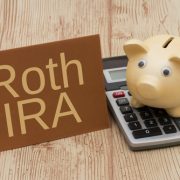Key Differences that Define the Self-Directed SEP IRA
Investors often take a typical route to retirement: 401(k) plans, maybe a Roth IRA, and they call it a day. But that usually assumes that you’re coming at retirement from the perspective of an employee. What if you’re an employer, or self-employed? Your range of IRA options changes, and you likely get introduced to the possibility of a different retirement vehicle: the Self-Directed SEP IRA.
With high contribution limits and a lot of potential investing freedom in this account, you may find that it’s a great addition to your retirement strategy. However, that doesn’t mean that everything about the Self-Directed SEP IRA is going to be intuitive to you. To help define it, let’s look at how it differs from other IRAs.
What is the Self-Directed SEP IRA?
The SEP IRA, short for the Simplified Employee Pension IRA, is a retirement account you can establish if you’re self-employed or an employer. In this case, the contributions made to the SEP IRA would be tax-deductible.
These are typically used by self-employed individuals or small businesses without a lot of employees. However, they’re flexible enough to be used on a wide range of these business types. For instance, if you have a Single Member LLC in which you’re self-employed, a SEP IRA can be a valid option. The same is true if you have an LLC with five employees. However, there will be more complication that arises as soon as you start contributing for employees, to make sure your contributions are equitable.
The Key Differences that Separate the Self-Directed SEP IRA
What makes a SEP IRA different than a Roth IRA? Let’s take a look at the distinguishing characteristics that should help clarify what we’re talking about:
- Tax-deductible contributions. Although tax-deductible contributions are common in 401(k) plans and the Traditional IRA, it’s a distinguishing feature between the SEP IRA and the Roth IRA as SEP IRA contributions are tax deductible while Roth contributions are not.
- SEP IRAs have high contribution limits. Although many people love Roth IRAs because they allow investors to put after-tax money into a retirement account—which comes with all sorts of other benefits—it does have one limitation. Contributions. They’re currently capped at $6,000 for the year of 2022, depending on your age. SEP IRAs, however, have much higher contribution limits (potentially as high as $61,000), which means investors can put together retirement accounts within a relatively short amount of time, especially with the tax savings that come from these high contribution limits.
- Employment requirements. As Investopedia notes: “Small organizations favor SEP IRAs because of eligibility requirements for contributors, including a minimum age of 21, at least three years of employment, and a $650 compensation minimum.” In other words, they help companies build a more loyal and enduring workforce. Not only do the requirements help make that a fact, but SEP IRAs serve as incentives for employees who work at the company, who can utilize those retirement benefits right away.
While many people might use both a Roth IRA and a SEP IRA, it’s vital to see that these key differences can make a big change in the way you approach retirement investing.
What about self-direction? Here at American IRA, we like to talk about how self-direction means more options for investing. If an investor directs their own retirement account, they have the option to invest in all sorts of retirement assets, including real estate, precious metals, private companies, and more. This gives them more options for retirement, which can be the goal of any employer—or self-employer—in the first place.
Interested in learning more about Self-Directed IRAs? Contact American IRA, LLC at 866-7500-IRA (472) for a free consultation. Download our free guides or visit us online at www.AmericanIRA.com.










